How to Maintain an Eco-Friendly Indoor Garden: A Complete Guide
Are you dreaming of a vibrant indoor garden that not only beautifies your home but also contributes to the planet's health? Well, you're in the right place! This guide explores practical tips and techniques for cultivating a sustainable indoor garden, focusing on eco-friendly practices that benefit both plants and the environment. Imagine transforming your living space into a green sanctuary filled with lush plants that purify the air and bring a sense of tranquility. Not only does an indoor garden enhance your home’s aesthetic, but it also fosters a deeper connection with nature. So, let’s dive into the essentials of maintaining an eco-friendly indoor garden!
Selecting the appropriate plants is crucial for an eco-friendly indoor garden. You want to consider native species and low-maintenance options that thrive indoors while requiring minimal resources. Think about plants like snake plants, spider plants, and peace lilies—they're not only hardy but also excellent at purifying the air. By choosing plants that naturally adapt to indoor conditions, you’ll save time and energy, making your gardening experience more enjoyable. Plus, these plants often require less water and fertilizer, which is a win-win situation for both you and the environment!
Using organic soil and fertilizers enhances plant health while reducing chemical runoff. It's essential to explore natural alternatives that enrich the soil and promote sustainable growth without harming the ecosystem. Organic compost, worm castings, and peat-free potting mixes can do wonders for your plants. Not only do they provide the necessary nutrients, but they also improve soil structure and water retention. Remember, healthy soil leads to healthy plants, and in turn, a thriving indoor garden!
Effective watering techniques can conserve water and promote healthy plant growth. Overwatering is a common mistake that can lead to root rot, so it’s vital to find a balance. Techniques like drip irrigation and self-watering systems can help maintain optimal moisture levels while minimizing water waste. You might also consider using a moisture meter to gauge when your plants truly need a drink. By being mindful of your watering habits, you’ll not only keep your plants happy but also play your part in conserving this precious resource.
Proper lighting is essential for indoor gardens. Many indoor plants thrive in indirect sunlight, but some might require additional light to flourish. Discover energy-efficient lighting options, including LED grow lights, that provide the necessary illumination while minimizing energy consumption. These lights are not only cost-effective but also emit less heat, reducing the risk of burning your plants. Position your plants near windows or use grow lights to ensure they receive adequate light, and watch them thrive!
Managing pests organically is vital for an eco-friendly garden. Instead of reaching for chemical pesticides, explore natural pest control methods and preventive practices that protect plants. For instance, introducing beneficial insects like ladybugs can help keep harmful pests at bay. Additionally, regularly inspecting your plants and maintaining cleanliness can prevent infestations. If you do encounter pests, natural remedies like neem oil or a simple soap spray can effectively manage the situation without harming your plants or the environment.
Incorporating recycled and upcycled materials into your indoor garden can enhance sustainability. Get creative by repurposing everyday items for plant containers and garden accessories. Old jars, tin cans, and even wooden crates can serve as charming planters. Not only does this practice reduce waste, but it also adds a unique touch to your garden. Plus, it can be a fun DIY project that lets your personality shine through in your indoor oasis!
A healthy indoor environment supports plant growth. Discover tips for maintaining optimal humidity, temperature, and air quality to ensure your indoor garden thrives. Plants generally prefer a humidity level of around 40-60%. You can achieve this by misting your plants or placing a tray of water nearby. Additionally, maintaining a consistent temperature—ideally between 65°F and 75°F—will keep your plants happy. Don’t forget about air quality; good ventilation is crucial. Opening windows or using air purifiers can help create a conducive atmosphere for your green friends.
Composting is an excellent way to recycle kitchen waste while providing nutrients for your plants. Learn how to start a small indoor compost system that benefits your garden. You can use a simple bin or even a compost tumbler. Kitchen scraps like vegetable peels, coffee grounds, and eggshells can be transformed into nutrient-rich compost. This not only reduces waste but also enriches your plants' soil, making them healthier and more robust!
Each season presents unique challenges for indoor gardens. Understand seasonal care strategies to keep your plants healthy and thriving throughout the year, adapting to changing conditions. For example, during winter, you might need to adjust your watering schedule as plants typically require less water in cooler months. Similarly, during summer, ensure your plants aren't getting too much direct sunlight. By staying attuned to your plants' needs throughout the seasons, you can ensure they flourish year-round.
Q: How often should I water my indoor plants?
A: It depends on the plant species and the environment. Generally, check the soil moisture; if it feels dry an inch below the surface, it’s time to water.
Q: Can I use regular garden soil for indoor plants?
A: It’s better to use potting soil specifically designed for indoor plants, as it provides better drainage and aeration.
Q: What can I do if my indoor plants are infested with pests?
A: Start by isolating the affected plants, then use natural pest control methods like neem oil or insecticidal soap.
Q: How do I know if my indoor plants are getting enough light?
A: If your plants are stretching towards the light or have yellowing leaves, they may need more light. Consider relocating them or adding grow lights.

Choosing the Right Plants
When it comes to creating an eco-friendly indoor garden, is like picking the perfect ingredients for a delicious recipe. You want to ensure that your selections not only thrive indoors but also contribute positively to the environment. Native species are often the best choice, as they are adapted to your local climate and require fewer resources to flourish. Imagine bringing a piece of the outdoors inside, where your plants are not just surviving but thriving!
Low-maintenance plants are another fantastic option for your indoor garden. They allow you to enjoy the beauty of greenery without the hassle of constant care. Think of them as the reliable friends in your life—always there, but not demanding too much attention. Some great examples include:
- Snake Plant: Known for its air-purifying qualities and ability to tolerate low light.
- ZZ Plant: Almost indestructible, it can survive in various conditions.
- Pothos: A trailing vine that thrives in low light and needs minimal watering.
- Spider Plant: Great for beginners, it produces offshoots that can be propagated easily.
By selecting plants that are both native and low-maintenance, you create a sustainable ecosystem right in your home. These plants not only enhance your living space but also help in reducing your carbon footprint. So, why not make your indoor garden a sanctuary for both you and the environment? Remember, the key is to choose plants that not only look good but also work hard to improve your indoor air quality and require minimal resources.
Additionally, consider the specific conditions of your indoor space. Factors like light availability, humidity, and temperature play a crucial role in plant selection. For instance, if you have a bright, sunny window, you might opt for sun-loving plants like succulents or herbs. Conversely, in darker areas, shade-tolerant plants will thrive. It’s a bit like matching your outfit to the occasion—choosing the right plants means understanding their needs and your home’s environment.
To sum it all up, when choosing plants for your eco-friendly indoor garden, think about:
| Plant Type | Light Requirement | Watering Frequency | Air Purification |
|---|---|---|---|
| Snake Plant | Low to Bright | Every 2-6 weeks | Yes |
| ZZ Plant | Low to Medium | Every 2-3 weeks | Yes |
| Pothos | Low to Bright | Every 1-2 weeks | Yes |
| Spider Plant | Medium to Bright | Every week | Yes |
By taking the time to carefully select the right plants, you’re setting the foundation for a thriving, eco-friendly indoor garden that not only beautifies your home but also promotes a healthier planet. So, roll up your sleeves, get your hands dirty, and start your green journey today!
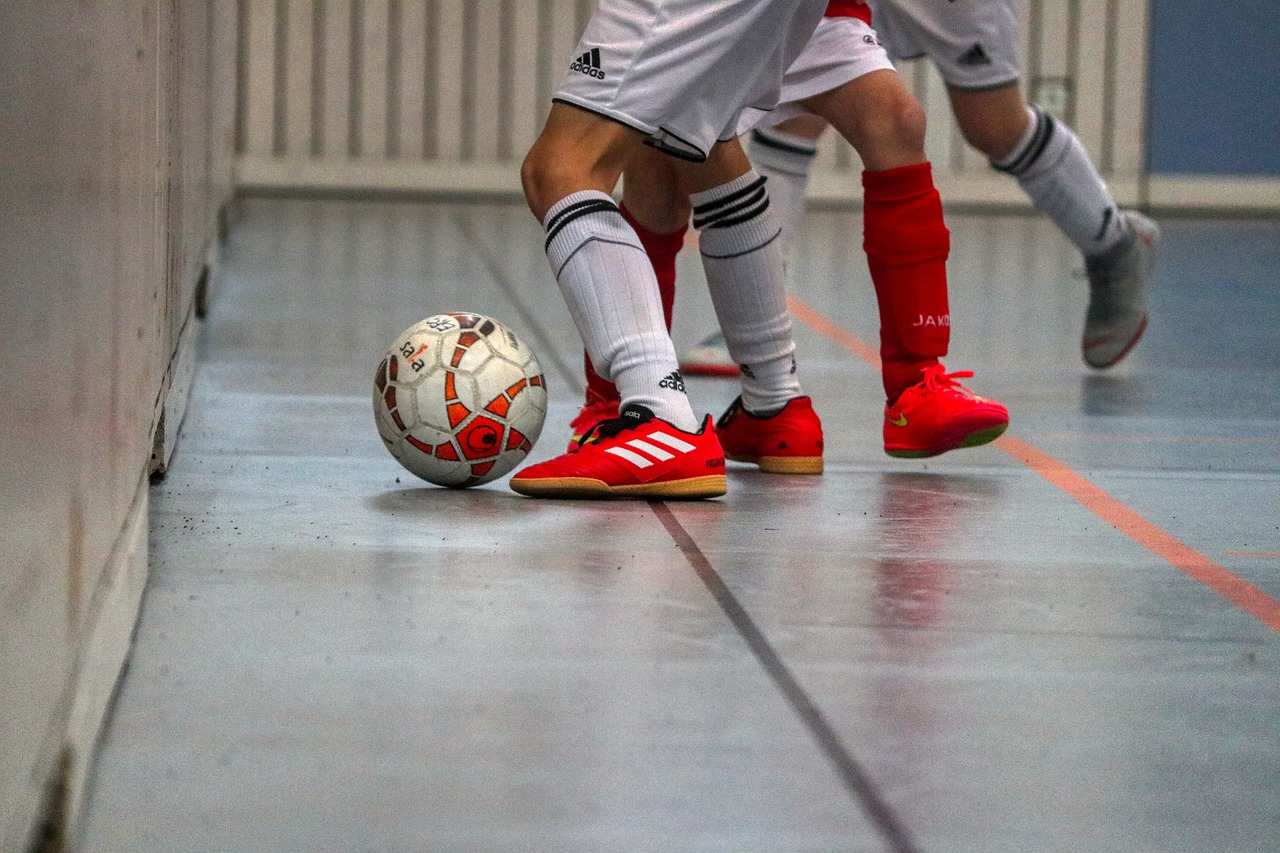
Soil and Fertilizer Options
When it comes to creating an eco-friendly indoor garden, one of the most critical elements is undoubtedly the soil and fertilizers you choose. Think of soil as the backbone of your garden; it supports your plants, provides them with essential nutrients, and helps retain moisture. Using organic soil not only enhances plant health but also plays a significant role in reducing chemical runoff that can harm the environment. So, what should you look for when selecting soil for your indoor plants?
First off, consider using potting mixes that are specifically formulated for indoor plants. These mixes often contain a blend of organic materials like peat moss, coconut coir, and compost, which provide excellent aeration and drainage. The beauty of using organic potting mixes is that they are rich in nutrients and beneficial microorganisms that promote healthy growth. You might also want to check if the soil is pH-balanced, as this can significantly affect nutrient availability for your plants.
Now, let’s talk about fertilizers. Traditional chemical fertilizers can be detrimental to both your plants and the environment. Instead, opt for organic fertilizers that are derived from natural sources such as compost, worm castings, or seaweed extracts. These fertilizers not only nourish your plants but also improve soil structure and health. For instance, compost adds a wealth of nutrients and beneficial bacteria to the soil, creating a thriving ecosystem right in your pots. You can even make your own compost at home using kitchen scraps, which is a fantastic way to recycle waste and provide your plants with a nutrient-rich food source.
Another great option is to use slow-release fertilizers. These fertilizers gradually release nutrients over time, ensuring that your plants receive a steady supply without the risk of over-fertilization. They are particularly useful for busy gardeners who might forget to feed their plants regularly. Just make sure to follow the recommended application rates to avoid any potential nutrient burn.
To give you a clearer idea of the differences between various soil and fertilizer options, here’s a handy table:
| Type | Benefits | Considerations |
|---|---|---|
| Organic Potting Mix | Rich in nutrients and beneficial microbes | Can be more expensive than synthetic options |
| Compost | Improves soil structure and provides a range of nutrients | Requires time to decompose |
| Slow-Release Fertilizers | Gradual nutrient release, less risk of over-fertilization | Can be costlier upfront |
| Liquid Organic Fertilizers | Quick nutrient absorption | Needs to be applied more frequently |
By choosing the right soil and fertilizers, you’re not just setting your plants up for success; you’re also making a positive impact on the environment. Remember, the goal is to create a sustainable ecosystem within your indoor garden. So, take the time to research and select the best organic options available. Your plants will thank you for it, and you'll enjoy the satisfaction of knowing you're doing your part to protect our planet.
- What is the best soil for indoor plants? Organic potting mix is typically the best choice as it provides excellent drainage and is rich in nutrients.
- How often should I fertilize my indoor plants? It depends on the type of fertilizer used; slow-release fertilizers can last for several months, while liquid fertilizers may need to be applied every few weeks.
- Can I use garden soil for indoor plants? It's not recommended, as garden soil can contain pests and diseases that could harm your indoor plants.
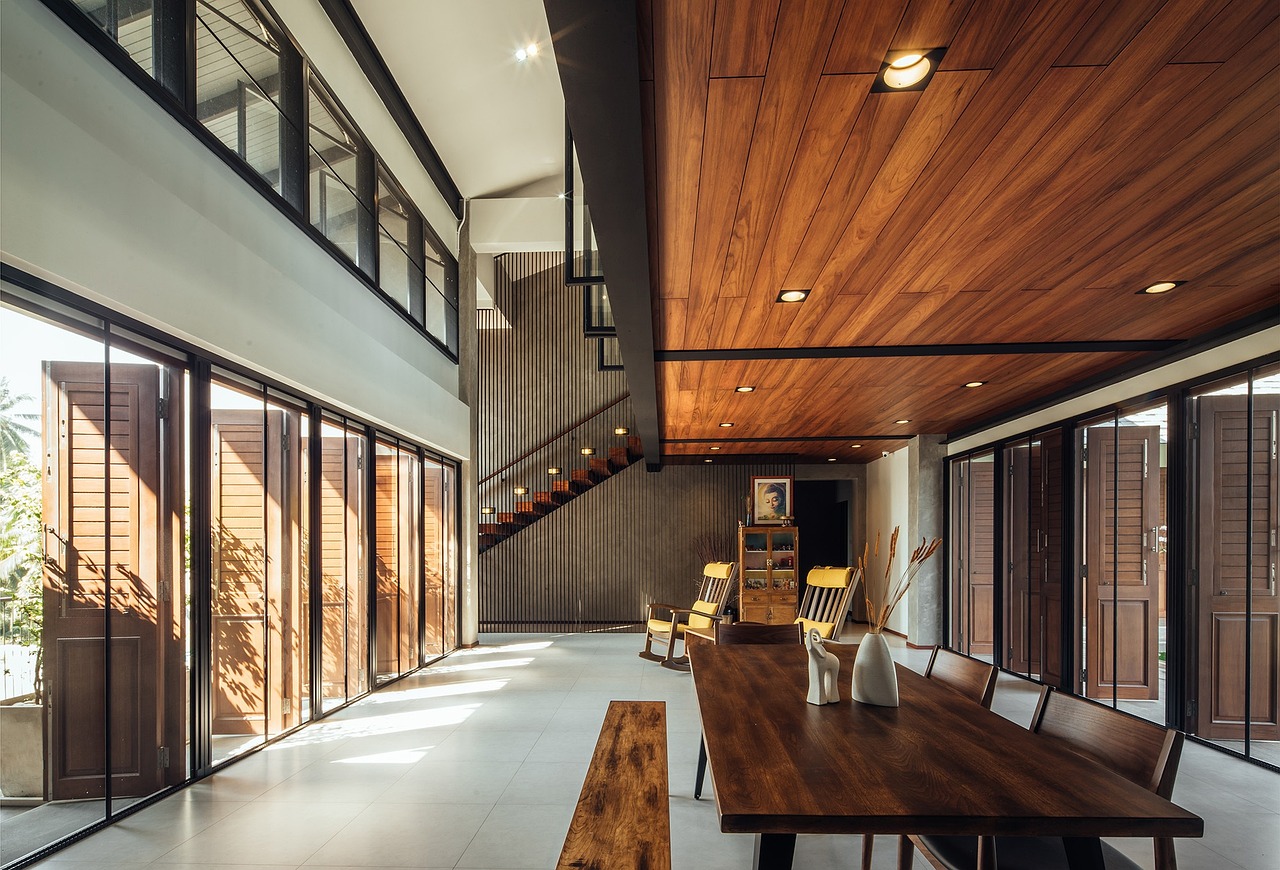
Watering Techniques
When it comes to maintaining an eco-friendly indoor garden, play a pivotal role in ensuring that your plants receive the right amount of moisture without wasting water. Imagine your plants as little green friends that need just the right drink to thrive. Overwatering can drown them, while underwatering can leave them parched and unhappy. So, how do we strike that perfect balance? Here are some effective techniques that not only promote healthy growth but also conserve water.
One of the most efficient methods is drip irrigation. This technique delivers water directly to the roots of the plants, minimizing evaporation and runoff. Think of it like a tiny watering system that gently feeds your plants throughout the day, ensuring they get just what they need. You can easily set this up using a simple hose or even a series of plastic bottles with holes poked in them. Just bury the bottle neck-down in the soil, and you have a self-watering system that requires minimal effort!
Another fantastic option is the self-watering planter. These planters have a built-in reservoir that allows plants to absorb water as they need it. It’s like having a personal butler for your plants, ensuring they never go thirsty. Plus, these planters often come with indicators that show when it’s time to refill the reservoir, making your life a whole lot easier.
For those who love a more hands-on approach, consider the moisture meter. This handy device takes the guesswork out of watering. Simply insert the probe into the soil, and it will tell you whether your plants are thirsty or perfectly content. By using a moisture meter, you can avoid the common pitfall of overwatering, which can lead to root rot and other issues. It’s like having a little plant doctor at your fingertips!
In addition to these methods, it’s crucial to pay attention to the timing of your watering. Most plants prefer to be watered in the early morning or late afternoon when temperatures are cooler, reducing evaporation. Imagine watering your plants during the hottest part of the day—it’s like trying to drink water while running a marathon! Instead, give them a refreshing drink when they can truly benefit from it.
Now, let’s talk about the type of water you use. While tap water is often fine, it can contain chemicals like chlorine and fluoride that may not be ideal for all plants. Consider using rainwater or filtered water, which is softer and more natural. Rainwater is like a spa day for your plants, free from harsh chemicals and full of nutrients. If you can, collect rainwater in barrels and use it to hydrate your indoor garden.
To sum it all up, effective watering techniques are essential for a sustainable indoor garden. By implementing methods like drip irrigation, self-watering planters, and moisture meters, you can ensure your plants thrive while conserving water. Remember, the goal is to create a harmonious environment where your plants can flourish, and with these techniques, you’re well on your way!
- How often should I water my indoor plants? - It depends on the type of plant, the size of the pot, and the conditions in your home. Generally, check the top inch of soil; if it's dry, it's time to water.
- Can I use tap water for my indoor garden? - Yes, but if possible, let it sit for 24 hours to allow chlorine to evaporate before using it.
- What are signs of overwatering? - Yellowing leaves, wilting, and root rot are common signs of overwatering.
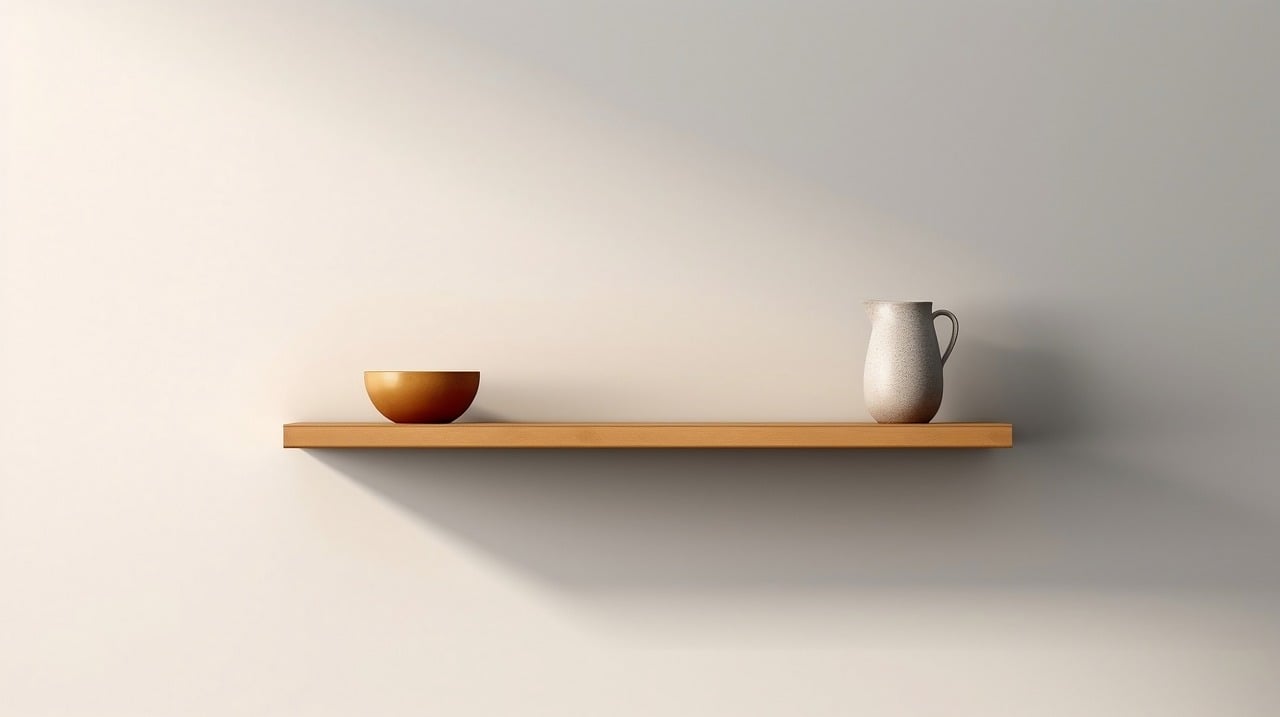
Lighting Solutions
When it comes to nurturing your indoor garden, lighting is a game changer. Without the right kind of light, even the hardiest plants can struggle to thrive. Think of your plants as little solar panels; they need that energy to grow and flourish. So, how do you ensure your indoor garden gets the right amount of light? Well, let’s dive into the world of eco-friendly lighting solutions that not only benefit your plants but also keep your energy bills in check.
First off, it’s essential to understand the different types of lighting available. Natural sunlight is ideal, but not every indoor space is blessed with abundant light. This is where artificial lighting comes into play. Energy-efficient options like LED grow lights are fantastic choices. They emit the full spectrum of light that plants need for photosynthesis while consuming significantly less energy than traditional bulbs. Plus, they last longer, which means less waste in the long run. Imagine replacing a bulb every few months versus one that lasts for years—talk about a win for both your plants and the planet!
But how do you choose the right LED grow light for your indoor garden? Here’s a quick breakdown:
| Type of Light | Best For | Energy Consumption |
|---|---|---|
| Full Spectrum LED | All stages of plant growth | Low |
| Red/Blue LED | Flowering and fruiting plants | Very Low |
| Fluorescent Lights | Seedlings and low-light plants | Moderate |
When setting up your lighting, consider the placement of your lights. The distance between the light source and your plants is crucial. Too far away, and your plants may not receive enough light; too close, and you risk burning them. A general rule of thumb is to keep LED lights about 12 to 24 inches above your plants, adjusting as they grow. It’s like giving them a cozy sunbath—just the right distance to soak up that energy!
Moreover, don't forget about the timing. Plants have a natural circadian rhythm, so mimicking day and night cycles can significantly boost their health. For most indoor plants, around 12-16 hours of light followed by 8-12 hours of darkness works wonders. You might want to invest in a timer to automate this process. Just set it and forget it—your plants will thank you!
Lastly, keep in mind that light isn’t just about quantity; it’s also about quality. Some plants prefer cooler light, while others thrive under warmer tones. Pay attention to your plants’ needs and adjust your lighting accordingly. It’s like finding the perfect playlist for your plant party—everyone has their vibe!
In conclusion, choosing the right lighting solutions for your indoor garden is essential for creating a thriving ecosystem. By opting for energy-efficient LEDs, understanding light placement, timing, and quality, you not only enhance your plants' growth but also contribute to a more sustainable environment. So, let your indoor garden bask in the glow of eco-friendly lighting and watch it flourish!
- How long should I leave my grow lights on? Most plants thrive with 12-16 hours of light per day, followed by a rest period of 8-12 hours.
- Can I use regular bulbs for my indoor garden? While regular bulbs can provide light, they are not as efficient as LED grow lights, which are specifically designed for plant growth.
- What’s the best type of grow light for beginners? Full spectrum LED grow lights are great for beginners as they support all stages of plant growth.

Pest Management Strategies
When it comes to maintaining an eco-friendly indoor garden, pest management is a crucial aspect that cannot be overlooked. After all, pests can wreak havoc on your beloved plants, but the good news is that you don't have to resort to harmful chemicals to keep them at bay. Instead, you can embrace natural pest control methods that are not only effective but also safe for the environment. Think of it as inviting a few friendly bugs to the party while politely showing the harmful ones the door!
One of the first steps in managing pests organically is to encourage beneficial insects. These little allies, such as ladybugs and lacewings, can help keep the pest population in check. You can attract them by planting flowers like marigolds and nasturtiums nearby. It's like creating a welcoming environment for your pest-fighting squad! Additionally, you can introduce beneficial nematodes to the soil, which will hunt down harmful pests lurking beneath the surface.
Another effective strategy is to implement preventive practices. Regularly inspecting your plants for signs of pests is essential. Early detection can save you from a full-blown infestation. Look for discolored leaves, webbing, or small holes, which may indicate unwelcome guests. If you spot any, act quickly! You can rinse your plants with a gentle stream of water or use insecticidal soap made from natural ingredients, which is a great way to tackle soft-bodied pests like aphids.
Moreover, consider creating a homemade pest deterrent spray. Mix a few drops of dish soap with water and spray it directly onto the affected areas. This simple concoction can suffocate soft-bodied insects without harming your plants. Alternatively, a mixture of garlic and water can also work wonders—pests tend to dislike the strong scent, making it a natural repellent. It's like giving your plants a protective shield that smells a bit like dinner!
Lastly, don't underestimate the power of cultural controls. This means adjusting your gardening practices to make your indoor garden less inviting to pests. For instance, ensure your plants are well-spaced to promote good airflow, as overcrowding can create a humid environment where pests thrive. Additionally, avoid over-fertilizing, as excessive nutrients can lead to lush, tender growth that pests find irresistible. Think of it as setting the table for a feast—make sure it's not too crowded and not too rich!
In summary, managing pests in your indoor garden doesn't have to be a daunting task. By embracing natural methods and preventive practices, you can create a thriving ecosystem that benefits both your plants and the environment. Remember, it's all about finding that balance and inviting the right guests to your garden party!
- What are some signs of pest infestations in indoor plants? Look for discolored leaves, webbing, small holes, or visible bugs on the plants.
- How can I attract beneficial insects to my indoor garden? Plant flowers like marigolds and nasturtiums to create a welcoming environment for beneficial insects.
- Is homemade pest spray effective? Yes, mixtures of soap or garlic with water can effectively deter pests without harming your plants.
- Can I use chemical pesticides in an eco-friendly garden? It's best to avoid chemical pesticides as they can harm beneficial insects and the overall ecosystem.

Recycling and Upcycling Materials
In the journey of creating an eco-friendly indoor garden, one of the most rewarding practices is . Not only does it reduce waste, but it also adds a unique charm to your green space. Imagine transforming an old glass jar into a stylish plant container or using wooden pallets to create a vertical garden. These actions not only save money but also contribute to a healthier planet.
When you think about recycling, it’s easy to overlook everyday items that can be repurposed for your indoor garden. For example, plastic bottles can be cut and used as mini greenhouses, helping seedlings thrive in a warm environment. Old coffee grounds can serve as a nutrient-rich fertilizer, providing your plants with essential nutrients while keeping waste out of landfills. The possibilities are endless!
Here are some common materials that can be recycled or upcycled for your indoor garden:
- Glass Containers: From jars to old vases, glass containers can be great for displaying plants, especially succulents and herbs.
- Wooden Pallets: These can be transformed into vertical gardens or planters, adding a rustic touch to your indoor space.
- Old Furniture: Think about turning that unused dresser into a multi-tiered plant stand or using an old ladder to create a unique plant display.
- Egg Cartons: Perfect for starting seeds, they provide an eco-friendly way to nurture young plants before transferring them to larger pots.
By incorporating these recycled materials, you're not just beautifying your home; you're also sending a message about the importance of sustainability. It’s like giving a second life to items that would otherwise be discarded. Plus, the creativity involved in upcycling can be incredibly fulfilling. Each piece you use tells a story and adds a personal touch to your garden.
Moreover, you can host a plant swap with friends and family, exchanging pots, soil, and even plants. This not only promotes recycling but also fosters a sense of community. Everyone can bring their unused gardening supplies to share, reducing waste and encouraging sustainable practices.
In conclusion, recycling and upcycling materials in your indoor garden is more than just a trend—it's a lifestyle choice that benefits both you and the environment. So, the next time you’re about to throw something away, pause and consider how it might contribute to your green oasis. With a little creativity and effort, you can create a stunning indoor garden that’s not only eco-friendly but also uniquely yours.
Q: What are some easy materials to start recycling for my indoor garden?
A: Common materials include glass jars, plastic bottles, egg cartons, and old furniture. Get creative with what you have!
Q: Can I use any type of plastic for my garden containers?
A: It's best to use food-grade plastics, as they are less likely to leach harmful chemicals into the soil.
Q: How can I ensure my upcycled materials are safe for my plants?
A: Clean all materials thoroughly and avoid using anything that has been treated with chemicals or paints that could be harmful.
Q: Are there any specific plants that thrive in recycled containers?
A: Most plants can adapt to recycled containers as long as they have proper drainage. Herbs, succulents, and small flowers are great options!
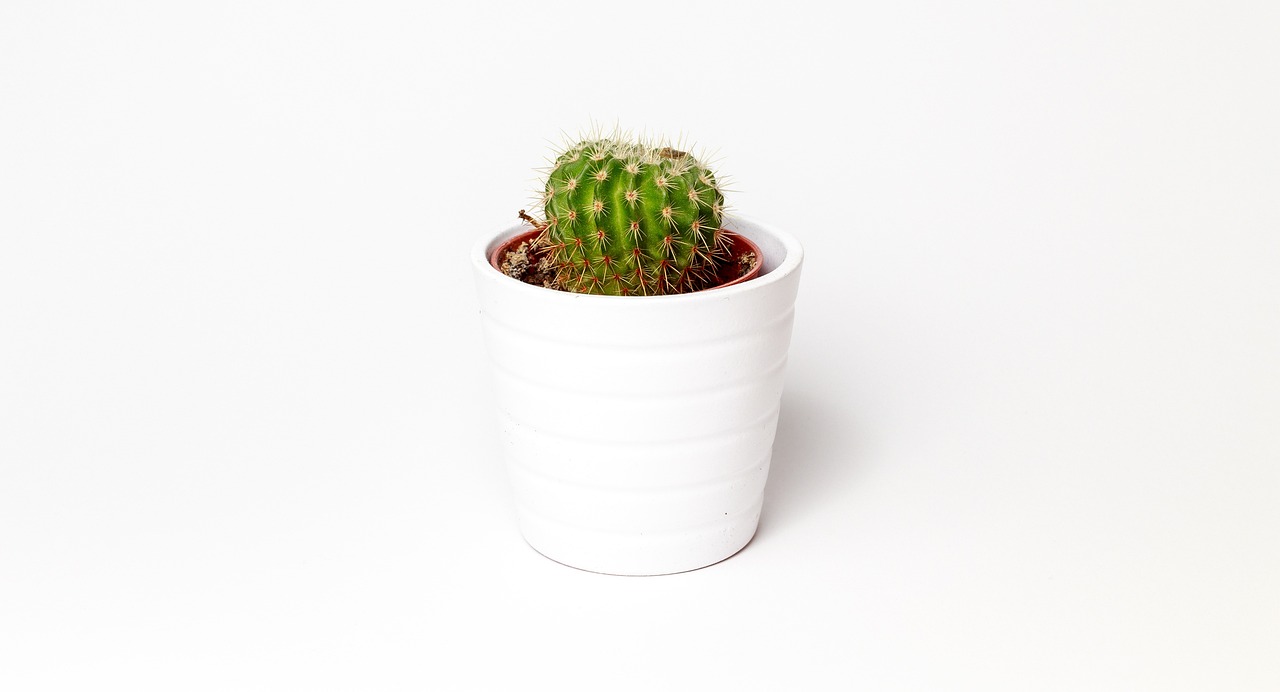
Creating a Healthy Environment
When it comes to nurturing your indoor garden, creating a healthy environment is absolutely essential. Think of your plants as little green roommates; just like you, they need the right conditions to thrive. This means paying attention to factors like humidity, temperature, and air quality. If you want your indoor garden to flourish, you must set the stage for success!
First off, let's talk about humidity. Most indoor plants prefer a humidity level between 40% and 60%. If your home is too dry, especially during the winter months when heating systems are running, you might notice your plants looking a bit droopy. To combat this, consider using a humidifier or placing a tray of water near your plants. You can also group plants together, as they naturally create a more humid microclimate. It’s like hosting a cozy get-together where everyone benefits!
Next, temperature plays a crucial role in plant health. Ideally, most indoor plants thrive in temperatures ranging from 65°F to 75°F (18°C to 24°C). Sudden temperature fluctuations can stress your plants, leading to poor growth or even death. Keep your plants away from drafts, heaters, and air conditioning vents. Think of your plants as delicate flowers; they need a stable environment to bloom beautifully!
Now, let’s not forget about air quality. Indoor air can be filled with pollutants, which can negatively affect both you and your plants. To improve air quality, consider introducing air-purifying plants like spider plants, peace lilies, and snake plants. These green friends not only beautify your space but also help filter out harmful toxins. It's a win-win situation! You get to enjoy a lovely indoor garden while breathing cleaner air.
Another critical aspect to consider is light. Ensure your plants are getting the right amount of light for their specific needs. Some plants thrive in bright, direct sunlight, while others prefer indirect light. Observing your plants and adjusting their positions can significantly impact their health. If natural light is limited, don’t hesitate to invest in energy-efficient grow lights. These can provide the necessary illumination without breaking the bank on your electricity bill.
Lastly, remember that your indoor garden is a dynamic ecosystem. Regularly check for any signs of stress or pests, as early detection can save your plants from potential harm. By creating a healthy environment, you’re not just fostering plant growth; you’re also cultivating a sense of well-being in your home. Your indoor garden can become a sanctuary, a place where you can unwind and connect with nature, even in the heart of the city.
- What is the ideal humidity level for indoor plants? Most indoor plants thrive in humidity levels between 40% and 60%.
- How can I improve air quality in my home? Introduce air-purifying plants and ensure proper ventilation to enhance air quality.
- What temperature is best for indoor plants? A temperature range of 65°F to 75°F (18°C to 24°C) is ideal for most indoor plants.
- How do I know if my plants are getting enough light? Observe their growth patterns; if they are stretching towards the light or have pale leaves, they may need more light.
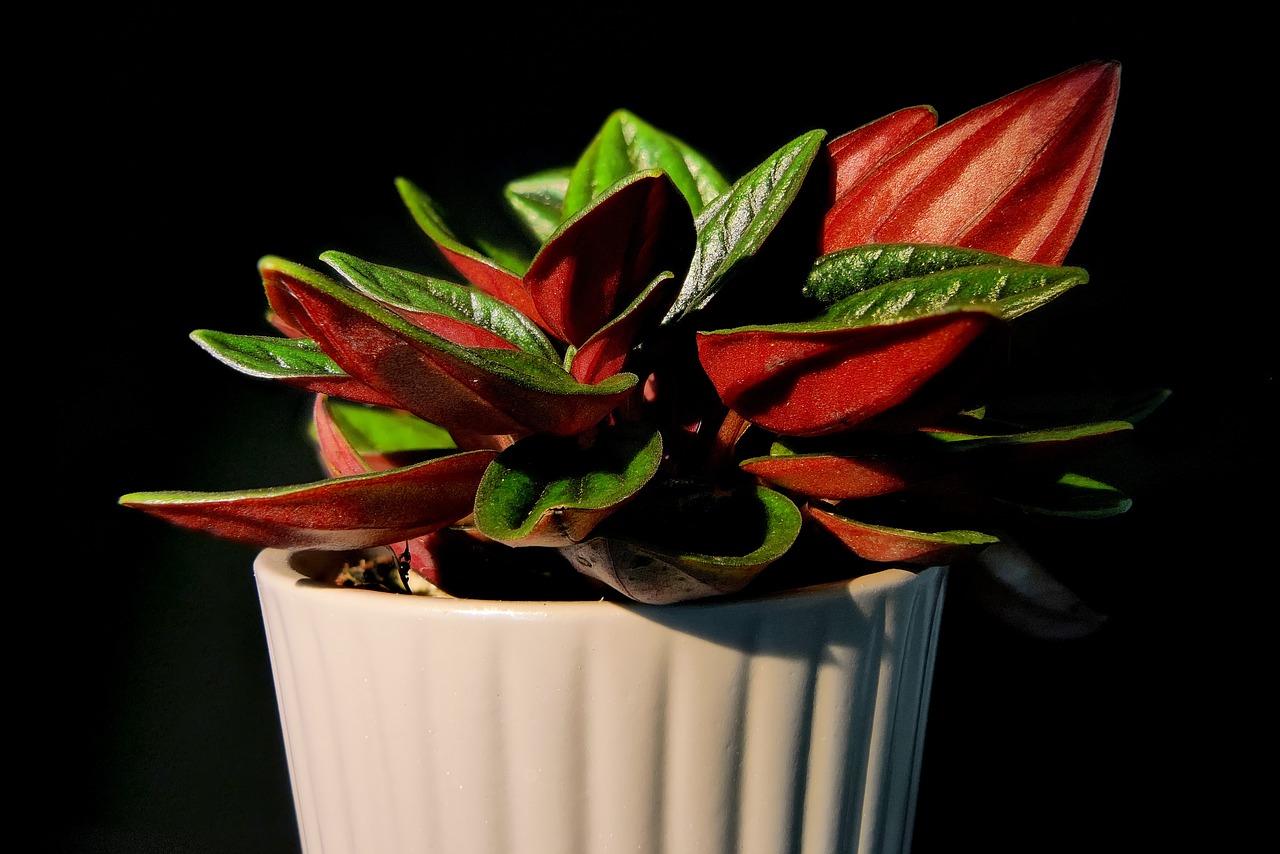
Composting for Indoor Gardens
Composting is one of the most rewarding practices you can adopt for your indoor garden. Not only does it help in recycling kitchen waste, but it also provides your plants with a rich source of nutrients that promotes healthy growth. Imagine turning your banana peels and coffee grounds into a nutrient-dense soil amendment that your plants will absolutely love! It’s like giving your plants a gourmet meal made from your kitchen scraps.
Starting a small indoor compost system doesn't have to be daunting. In fact, it can be quite simple and even enjoyable! You can use a variety of containers, from traditional compost bins to more creative solutions like a simple bucket or even a repurposed jar. The key is to ensure that your composting setup has the right balance of greens (nitrogen-rich materials) and browns (carbon-rich materials). Greens include items like vegetable scraps, while browns can be dried leaves or cardboard. Think of it as a recipe—too much of one ingredient can spoil the dish!
Here's a quick breakdown of what you can compost indoors:
- Fruit and vegetable scraps: Peels, cores, and other leftover bits.
- Coffee grounds: Rich in nitrogen and great for your plants.
- Eggshells: A fantastic source of calcium.
- Paper products: Shredded newspaper or cardboard, as long as they’re not glossy.
- Houseplant trimmings: Any excess foliage can be composted too!
Once you have your composting materials, the next step is to keep the compost active. This means turning it occasionally to aerate it and speed up the decomposition process. You can also add a bit of water if it seems too dry; you want it to be damp but not soggy. Over time, you’ll notice that your compost will break down into a dark, crumbly substance that smells earthy—this is your black gold!
Using your compost is where the magic really happens. You can mix it into your potting soil, sprinkle it on top of your plants, or even create a compost tea by steeping it in water. This not only nourishes your plants but also improves soil structure and water retention. It’s like giving your indoor garden a rejuvenating spa treatment!
Now, you might wonder, how long does it take for compost to be ready? Typically, it can take anywhere from a few weeks to a couple of months, depending on how actively you manage it. The more you engage with your compost, the quicker it will break down. So, don’t be shy—get your hands dirty and enjoy the process!
In conclusion, composting for indoor gardens is not just an eco-friendly practice; it’s a way to connect with nature right in your home. It enriches your plants while reducing waste, making it a win-win for you and the environment. So, roll up your sleeves and start composting today. Your plants will thank you!
1. What can I compost indoors?
You can compost fruit and vegetable scraps, coffee grounds, eggshells, paper products, and houseplant trimmings.
2. How do I know when my compost is ready?
Your compost is ready when it’s dark, crumbly, and smells earthy. It can take a few weeks to a couple of months to fully decompose.
3. Can I compost meat or dairy products?
It’s best to avoid composting meat and dairy indoors, as they can attract pests and create odors.
4. How often should I turn my compost?
Turning your compost every few weeks helps aerate it and speeds up the decomposition process.
5. Can I use compost from my indoor garden for outdoor plants?
Absolutely! Your indoor compost can be used for outdoor plants, enriching their soil as well.

Seasonal Care Tips
Maintaining an eco-friendly indoor garden is not just a one-time effort; it requires ongoing attention and care, especially as the seasons change. Each season brings its own set of challenges and opportunities for your plants, and understanding these can make a significant difference in their health and productivity. For instance, during the spring, you might notice that your plants are waking up from their winter dormancy, demanding more light and water. On the other hand, summer can be a time of rapid growth, but it also brings the risk of overheating and dehydration. So, how do you navigate these seasonal shifts?
First, let’s talk about winter care. As temperatures drop, your indoor plants may require less water, but they still need adequate light. Consider moving them closer to windows or investing in grow lights to supplement natural light. Additionally, maintaining humidity can be a challenge in winter due to indoor heating. You might want to use a humidifier or place a tray of water near your plants to keep the air moist. Remember, a dry environment can lead to problems like leaf drop and pest infestations.
When spring rolls around, it's time for repotting and rejuvenation. This is when plants start to grow actively, and they may outgrow their current pots. Repotting not only gives them more space to expand but also refreshes the soil, providing them with new nutrients. During this time, you should also start fertilizing your plants with organic options to support their growth. Don't forget to check for pests that may have taken refuge over the winter, as early detection is key to maintaining a healthy garden.
Summer is all about growth and hydration. Your plants will likely be at their peak, so be sure to monitor their watering needs closely. The heat can dry out the soil faster than you think. Consider using self-watering pots or drip irrigation systems to ensure they receive consistent moisture. Additionally, be mindful of direct sunlight; while many plants love it, some can get scorched. If you notice leaves turning yellow or crisping at the edges, it might be a sign that they need some shade during the hottest parts of the day.
As the fall approaches, it’s time to prepare your plants for the dormant season. Begin to reduce watering and fertilization as your plants slow down their growth. This is also a good time to prune any dead or unhealthy foliage, allowing the plants to conserve energy. You might also want to rotate your pots or change their positions to ensure they receive even light exposure as the days grow shorter.
To summarize, here are some key seasonal care tips for your indoor garden:
- Winter: Reduce watering, increase humidity, and provide adequate light.
- Spring: Repot, fertilize, and check for pests.
- Summer: Monitor hydration, adjust sunlight exposure, and consider self-watering systems.
- Fall: Reduce water and fertilizer, prune dead leaves, and rotate pots for even light.
By staying attuned to the needs of your indoor plants throughout the year, you can create a thriving, eco-friendly garden that not only beautifies your space but also contributes positively to the environment. Remember, the more you learn about your plants and their seasonal needs, the more successful your indoor garden will be!
Q: How often should I water my indoor plants during the winter?
A: Generally, indoor plants need less water in the winter. Check the soil moisture regularly and only water when the top inch feels dry.
Q: What are the signs that my plant needs repotting?
A: Signs include roots growing out of the drainage holes, stunted growth, and yellowing leaves. If you notice any of these, it might be time to repot!
Q: Can I use regular garden soil for indoor plants?
A: It's best to use potting soil designed for indoor plants, as it provides better drainage and aeration compared to regular garden soil.
Q: How can I increase humidity for my indoor garden?
A: You can increase humidity by using a humidifier, placing water trays near your plants, or misting them regularly.
Q: Are there specific plants that thrive better in low light?
A: Yes, plants like snake plants, pothos, and peace lilies are known to thrive in low-light conditions, making them perfect for indoor settings.
Frequently Asked Questions
- What are the best plants for an eco-friendly indoor garden?
Choosing the right plants is essential for creating a sustainable indoor garden. Look for native species that naturally thrive in your climate and require less maintenance. Plants like snake plants, pothos, and spider plants are excellent choices as they are hardy and can purify the air.
- How can I use organic soil and fertilizers?
Using organic soil and fertilizers is a game-changer for your indoor garden. Opt for compost or worm castings to enrich your soil naturally. You can also use organic fertilizers made from plant-based materials, which not only nourish your plants but also protect the environment from harmful chemicals.
- What are effective watering techniques for indoor plants?
Watering can make or break your indoor garden. Techniques like drip irrigation and self-watering systems help maintain consistent moisture levels while conserving water. Always check the soil moisture before watering to avoid overwatering, which can harm your plants.
- What lighting solutions are best for indoor gardens?
Proper lighting is crucial for plant health. Consider using LED grow lights as they are energy-efficient and provide the right spectrum of light for plant growth. Position your plants near windows for natural light, but supplement with artificial lights if necessary, especially during winter months.
- How do I manage pests organically?
Managing pests without chemicals is key to an eco-friendly garden. Use natural pest control methods like neem oil, diluted soap sprays, and introducing beneficial insects like ladybugs to keep pests at bay. Regularly inspect your plants and maintain cleanliness to prevent infestations.
- What materials can I recycle or upcycle for my indoor garden?
Get creative with recycling! You can use items like glass jars for plant containers, old pallets for vertical gardens, or even plastic bottles for self-watering planters. Upcycling not only saves money but also adds a unique touch to your garden.
- How can I create a healthy environment for my indoor plants?
Maintaining a healthy environment is vital for plant growth. Ensure your indoor space has the right humidity, temperature, and air quality. Use humidifiers if the air is too dry, and keep your plants away from drafts to create a cozy atmosphere for them to thrive.
- What is composting, and how can I start one indoors?
Composting is a fantastic way to recycle kitchen waste while enriching your plants. Start a small indoor compost system using a compost bin or a worm bin. You can compost vegetable scraps, coffee grounds, and eggshells, turning waste into nutrient-rich food for your plants.
- How should I care for my indoor garden throughout the seasons?
Seasonal care is essential for keeping your plants healthy. In spring, focus on repotting and fertilizing; during summer, ensure proper watering and light; in fall, prepare for reduced light and cooler temperatures; and in winter, monitor humidity and keep plants warm. Adjust care routines based on the season's challenges.


















